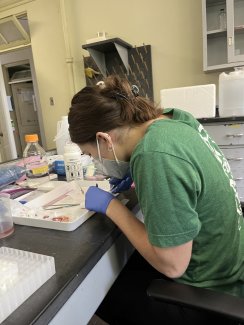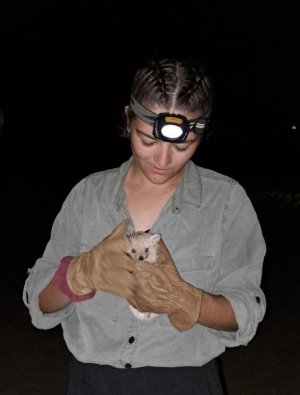Featured Expert: Olivia Chapman
May 27, 2025
Olivia Chapman is a PhD candidate at the University of North Carolina at Greensboro, focusing on mammal diversity. Chapman majored in Ecology and Evolutionary Biology at the University of Michigan and chose mammalogy due to the hands-on nature of the field.
Prior to graduate school, Chapman gained experience through a seasonal position working for the United States Geological Survey (USGS) in Ruidoso, New Mexico, where she was a plague ecology and mammal conservation technician for six months. She received so much hands-on experience with small mammals and loved that she could go outside, trap an area and find five or six different species. Seasonal work motivated Chapman to start applying to graduate school, and now, as a PhD candidate, you can find her in Dr. Bryan McLean's mammalian biodiversity lab.
Most of Chapman’s work revolves around gastrointestinal (GI) plasticity in small mammals. She’s interested in how animals use their GI tract as a coping mechanism for increases in energetic demand and has been examining the GI tract from a macroscopic and microstructural point of view.
For her thesis during her master’s, Chapman surveyed the same mice population at a field site in western North Carolina for an entire year, trapping them and measuring their GI tracts. She found that in the winter, they were eating poor food, and their GI tracts were 35% longer, indicating a huge increase in GI tract length. As a second part of her thesis, Chapman was interested in seeing if the GI tract length was a functional trait that could be used to predict community assembly. She targeted the Appalachian region and used seven NEON field sites to conduct her trapping, as well as other sites where researchers had done prior long-term trapping.

Chapman gathered GI tracts from her own field work, leveraged samples from the NEON Biorepository, and received donations from museums. The NEON Biorepository was key in helping her show that at more seasonal sites at higher latitudes, the communities are comprised of species with longer GI tracts, indicating that at higher latitude seasonal sites that are harsh in the winter and with poor-quality food, there is species turnover happening where species with long GI tracts are prioritized.
NEON plays a large role when it comes to accessing data and samples to inform research efforts, and stories like Olivia’s demonstrate how NEON can be used to inform important studies among the research community.

